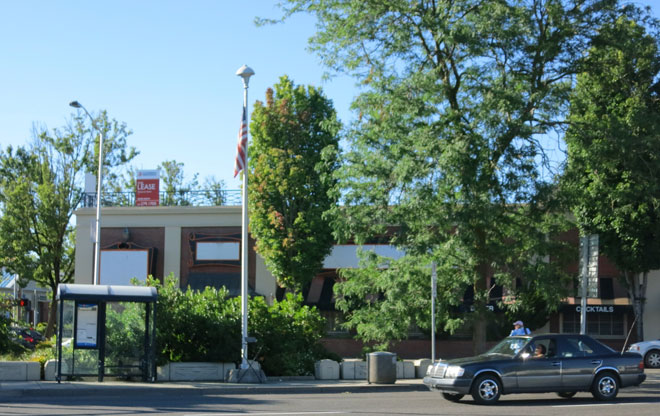
Urban Wedges
Sandy Boulevard runs at an angle to the block grid, leaving triangles at many intersections. Within the commercial district of the Hollywood neighborhood at NE 39th, this formerly-paved space has become a green traffic island and bus stop. Now the urban wedge still serves pedestrian needs but also treats stormwater.
Image: Carol Mayer-Reed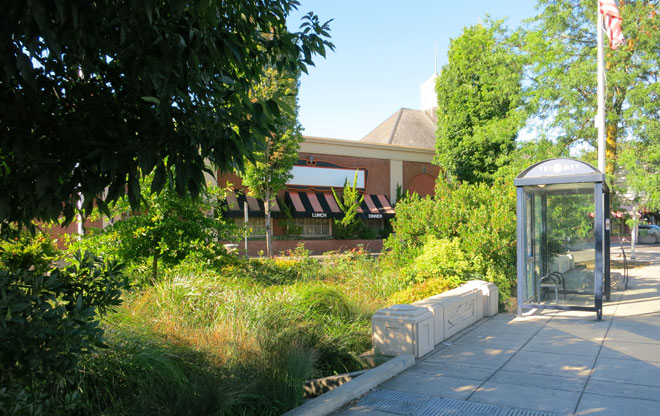
Rain Garden
The unused triangle was reconfigured to treat stormwater from the surrounding streets through a vegetated rain garden. Excavation of below-grade facilities was a real challenge due to underground utilities throughout the right-of-way.
Image: Carol Mayer-Reed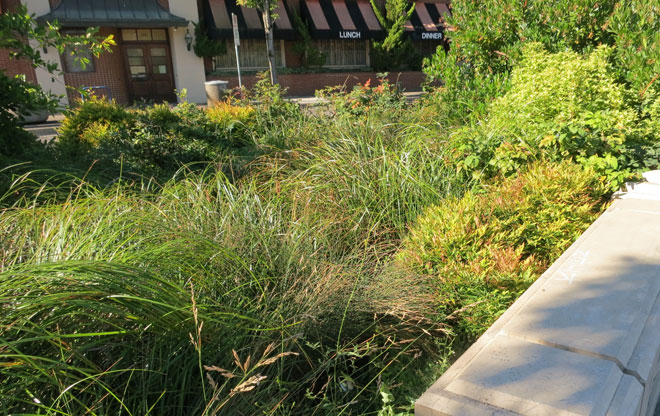
Rushes and Sedges
A mix of rushes and sedges colonize the rain garden, while upland species of drought-tolerant native and ornamental shrubs thrive on the side slopes.
Image: Carol Mayer-Reed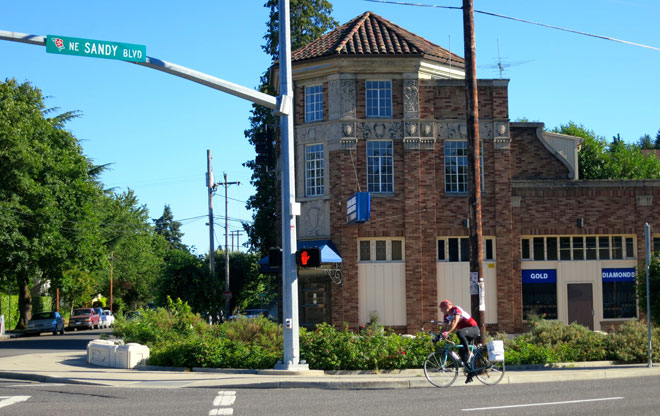
Green = Pedestrian and Bike Friendly
Another previously paved triangle of space at NE Sandy and NE 21st intersection has become an urban oasis along the commercial strip. It lends a unique identity to the neighborhood streetscape, making it more sustainable and pedestrian and bike friendly.
Image: Carol Mayer-Reed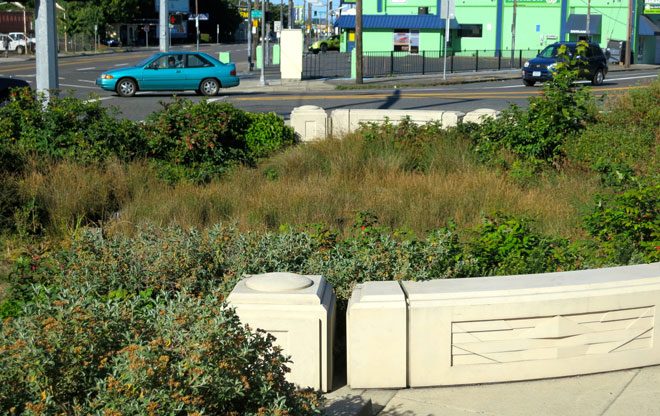
Monitored for Performance
The small rain garden treats stormwater runoff from the adjacent streets. It captures and infiltrates 94 percent of runoff from its collection basin. Two of the Sandy Boulevard rain gardens are monitored by the city to track performance.
Image: Carol Mayer-Reed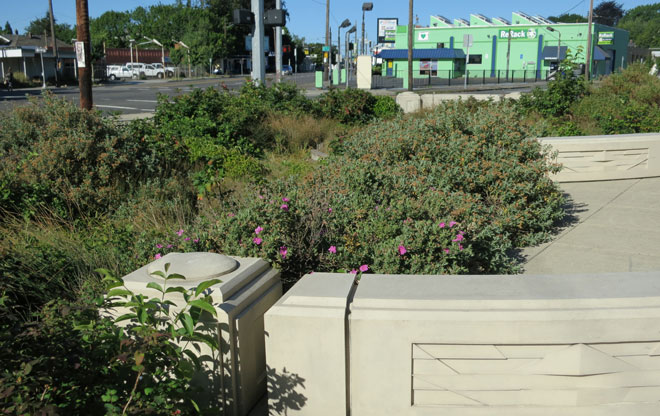
Art Deco Walls
The walls used to define the gardens along this segment of the corridor were designed to reflect the Art Deco-era architecture that remains along the historic strip.
Image: Carol Mayer-Reed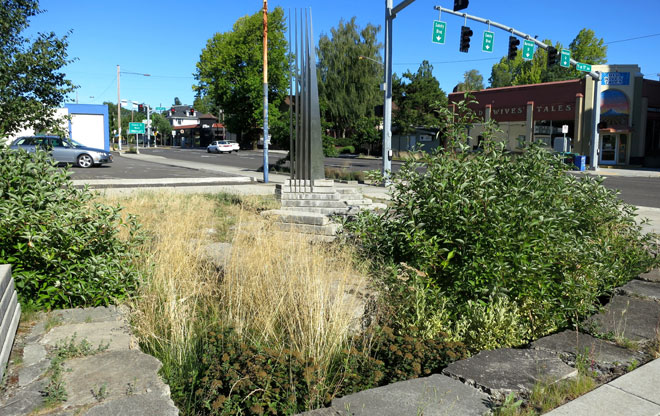
100 Percent of Runoff Captured
At NE Sandy and NE 13th Ave., this rain garden captures and infiltrates 100 percent of the collected runoff. Leftover precast concrete slabs from site demolition were recycled for paving and stacked for benches.
Image: Carol Mayer-Reed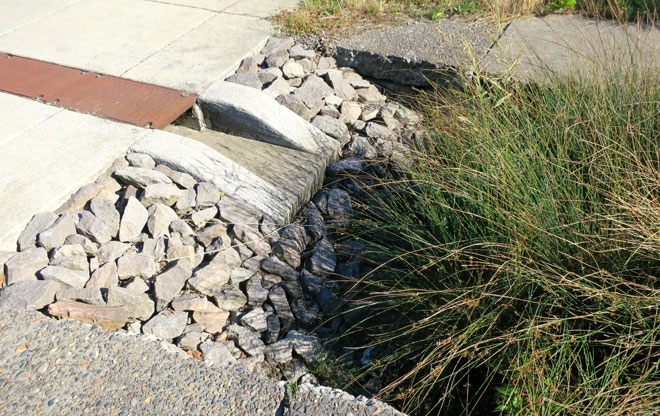
Directed Runoff
Steel runnels in the sidewalks call attention to how the runoff is directed from the streets to the rain gardens.
Image: Carol Mayer-Reed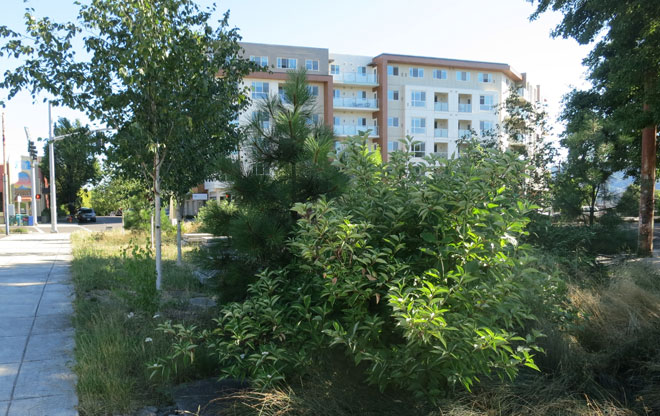
Plant Composition
Upland plants create a composition that's visually interesting throughout the year.
Image: Carol Mayer-Reed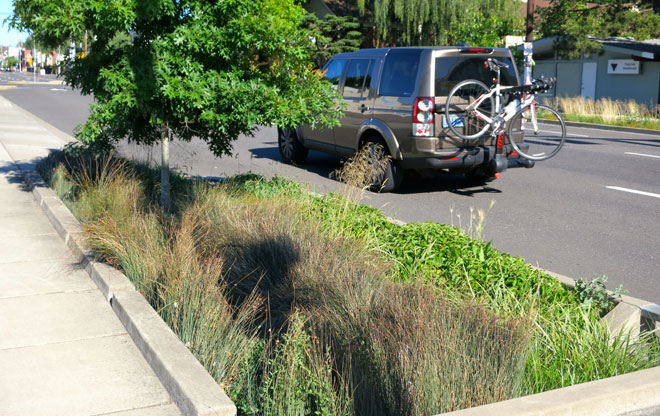
Street Rain Gardens
Smaller rain gardens are located at several places along NE Sandy Boulevard. Breaks in the curb walls surrounding the facility allow for both street and sidewalk runoff to be collected and treated.
Image: Carol Mayer-Reed